Abstract
Haemophilus influenzae type b was isolated from 4·5% of outpatient children living in various parts of Kampala city and its surroundings. In contrast, this serotype was carried by up to 53% (average 29%) of 14 to 18 children living as a group in an orphanage. This finding indicates that the high carriage rate for this serotype demonstrated by Turk (1963) in a group of orphanage infants in Jamaica was not an isolated finding, and that it may be expected where large groups of children live together.
H. influenzae type b did not appear to be a readily transmitted organism even in that group of children with a high carriage rate. This suggests that in ordinary open communities the transmission of this serotype from one household to another may be an extremely rare event.
Full text
PDF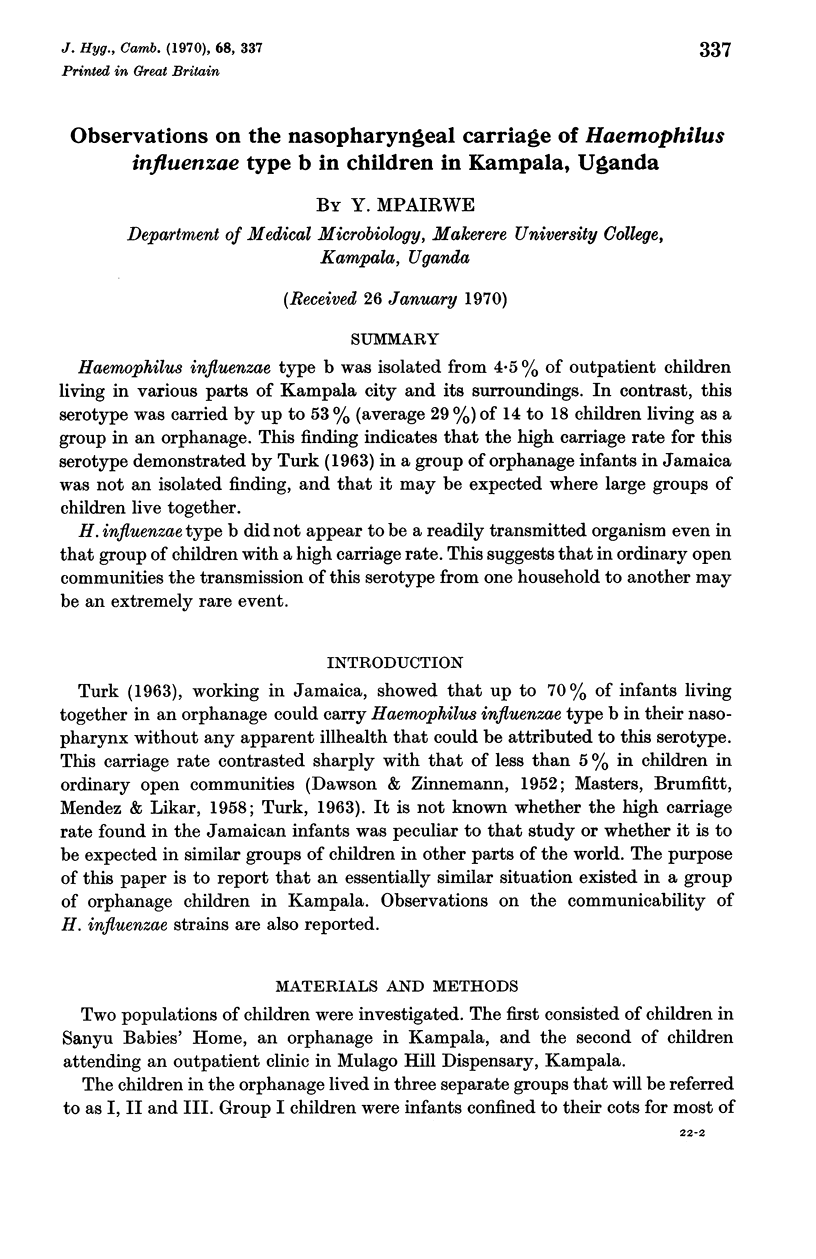
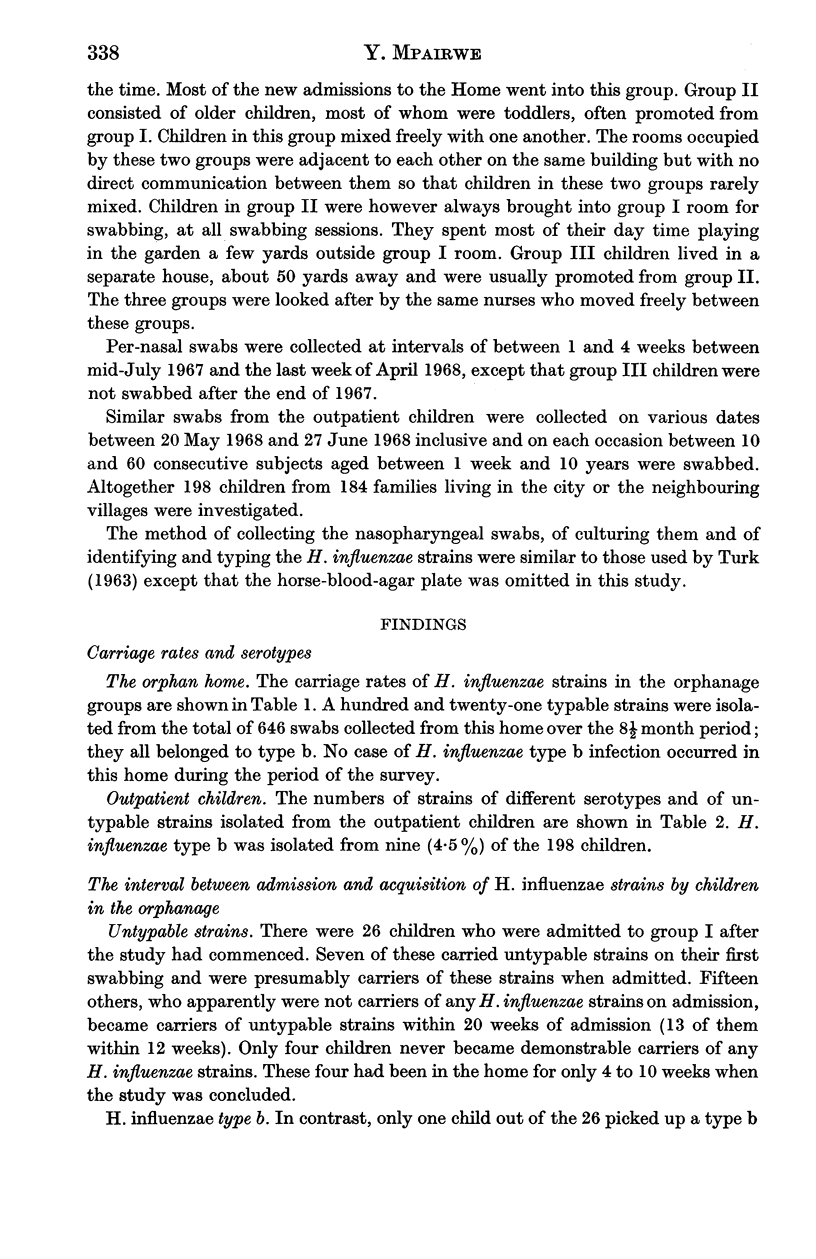
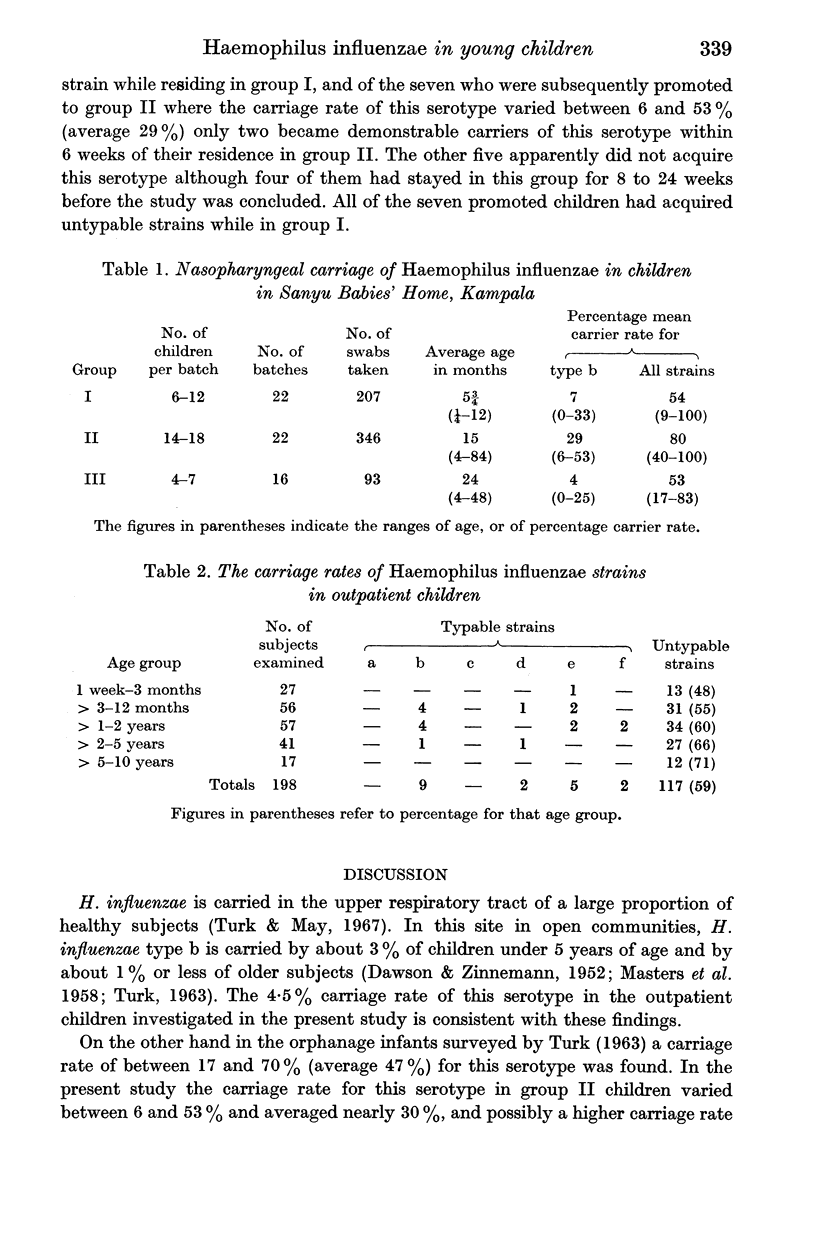
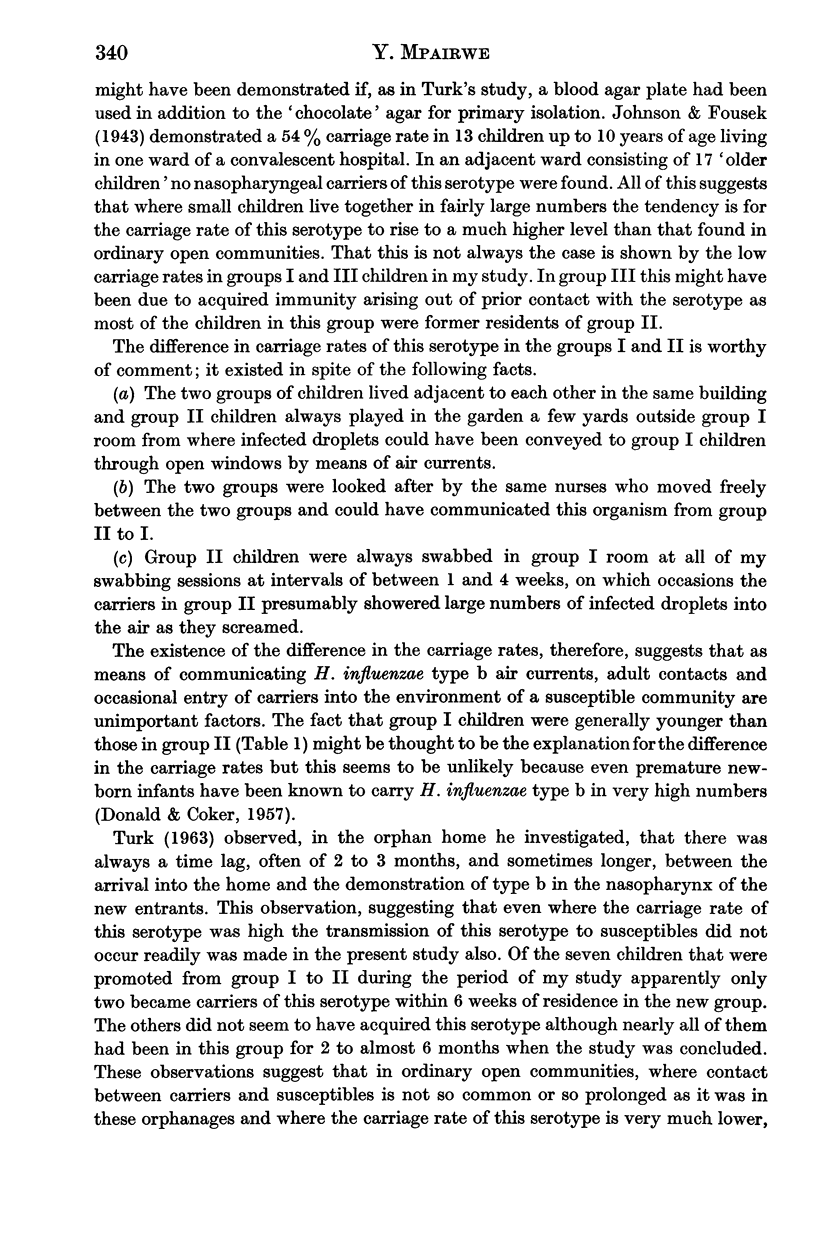
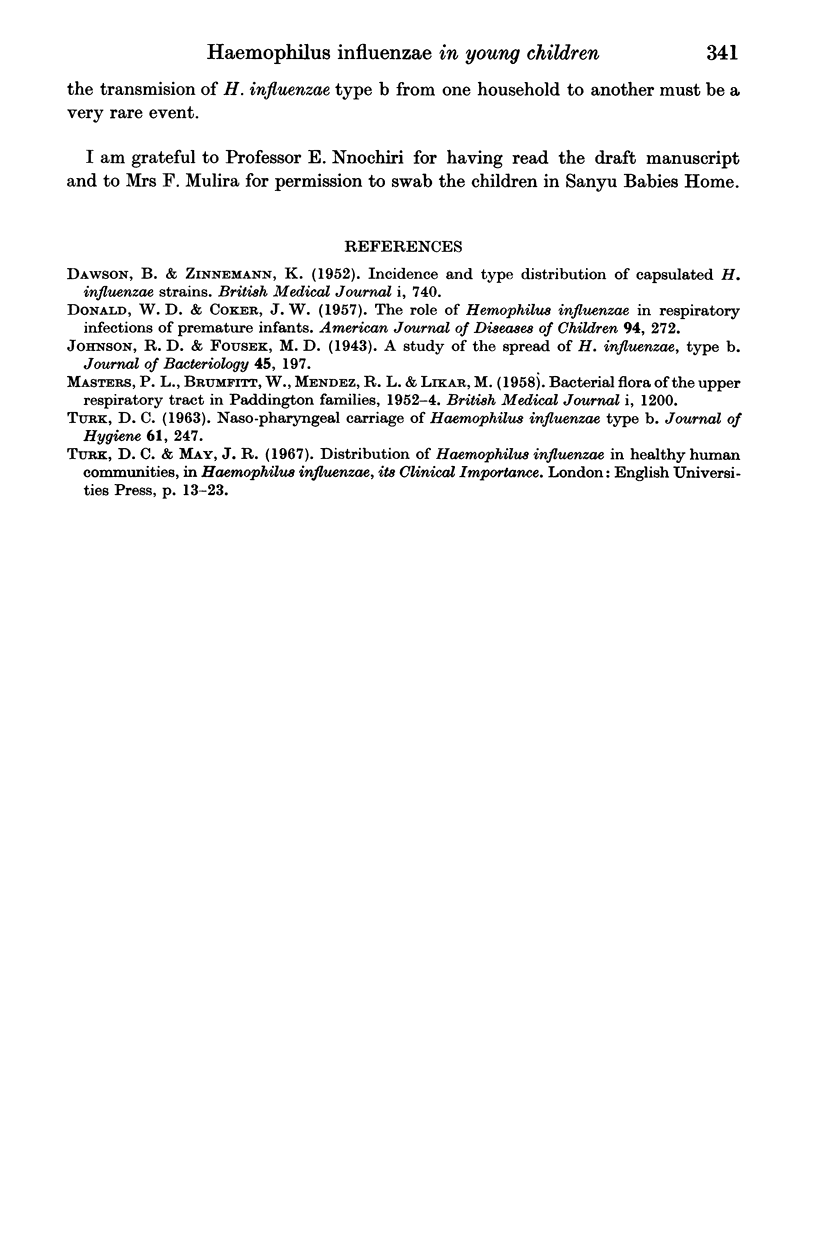
Selected References
These references are in PubMed. This may not be the complete list of references from this article.
- DAWSON B., ZINNEMANN K. Incidence and type distribution of capsulated H. influenzae strains. Br Med J. 1952 Apr 5;1(4761):740–742. doi: 10.1136/bmj.1.4761.740. [DOI] [PMC free article] [PubMed] [Google Scholar]
- DONALD W. D., COKER J. W. The role of Hemophilus influenzae in respiratory infections of premature infants. AMA J Dis Child. 1957 Sep;94(3):272–276. doi: 10.1001/archpedi.1957.04030040058008. [DOI] [PubMed] [Google Scholar]
- MASTERS P. L., BRUMFITT W., MENDEZ R. L., LIKAR M. Bacterial flora of the upper respiratory tract in Paddington families. 1952-4. Br Med J. 1958 May 24;1(5081):1200–1205. doi: 10.1136/bmj.1.5081.1200. [DOI] [PMC free article] [PubMed] [Google Scholar]
- TURK D. C. Naso-pharyngeal carriage of Haemophilus influenza type B. J Hyg (Lond) 1963 Jun;61:247–256. doi: 10.1017/s0022172400020957. [DOI] [PMC free article] [PubMed] [Google Scholar]


